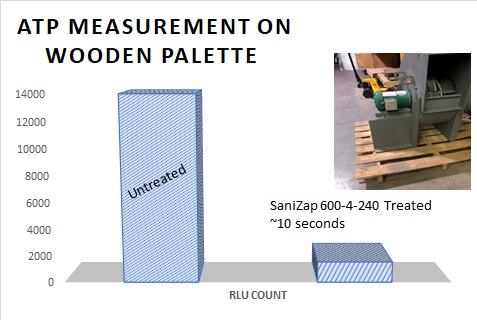Destroying PFAS with temperature.
High-temperature steam and steam plasma are available today. See for example here.
Destroying PFAS with temperature is possible. Reports place the temperature at between 500C and 1000C.
High-temperature steam and steam plasma are available today. See for example here.
Destroying PFAS with temperature is possible. Reports place the temperature at between 500C and 1000C.
SaniZap machines and high-temperature steam above its inversion temperature can be used for sterilization provided the correct residence time and temperature are employed.
What is sanitation, and disinfection, and how do they compare with sterilization?
Influence of Superheated Steam Temperature and Moisture Exchange on the Inactivation of Geobacillus stearothermophilus Spores in Wheat Flour‑Coated Surfaces by Park et. al..
Food and Bioprocess Technology, Springer, 2022
https://doi.org/10.1007/s11947-022-02830-3
Abstract
Sanitation in dry food processing environments is a major challenge for the industry. The influence of superheated steam
(SH) temperatures (125 to 250 °C) on the inactivation of spores on selected coupon surfaces (stainless steel, rubber, and
concrete) coated with wheat flour as a model food soil residue was investigated using a bench scale superheating apparatus.
Wheat flour inoculated with Geobacillus stearothermophilus (7.62 ± 0.12 log CFU/g) coated on the coupon surfaces served
as the model food residue. Among the surfaces tested, temperature of concrete increased faster [time constant (τ) < 89.0
s] than that of stainless steel (τ < 173.6 s). As a consequence, wheat flour coated on concrete dehydrated faster [moisture
diffusivity (Dm) > 1.17 × 10−4 mm2/s] than those on the stainless steel (Dm > 0.76 × 10−4 mm2/s). Hence, Geobacillus
stearothermophilus spores suspended on stainless steel were inactivated faster than that of concrete and rubber (p < 0.05).
The time required for a 5-log reduction at 250 °C were 180s and 240s, on stainless steel and concrete surfaces, respectively.
A mathematical model that considered surface temperature, food residue moisture content, and SH inversion temperature
adequately described spore inactivation during SH treatment.

It is estimated that In the United States, about 1 in every 25 patients contracts a healthcare-associated nosocomial infection, leading to almost 100,000 deaths per year. (Example of source: https://www.osmosis.org/answers/nosocomial-infection) One can Google for more articles.

This is similar to saying we should not wash our hands or we should reduce hygiene. We think the problem has more to do with the excessive use of toxic chemicals (yes, chemicals in concentrations are toxic). We do not recommend UV Ultra-Violet because the damage effects of UV on human tissues and cells are cumulative.
We recommend steam. Why Steam?
Can biofilms be eliminated with steam – a bit of antimicrobial trivia included?
Why are the SaniZap® Generators more Efficient than Boiler type of Steam Generators?
Compare Energy Savings with Rapid Steam Techniques to remove grime and dirt.
The History of Hygiene and Sanitation
HealthySurface® is a service in which surfaces are restored to, and maintained at, an original condition utilizing treatment provided by the superheated steam process and apparatus of SaniZap®. HealthySurface® provides the removal of foreign substances from objects and surfaces to initial conditions including cleanliness, texture, or scent. Cleanliness, as used here, may be defined as the removal of any content not initially present on a surface. Mighty steam is low oxygen above common inversion temperatures. A treatment provided by HealthySurface® will remove or reduce microbes when employed properly . However, repeated applications or other sanitation processes could be necessary to maintain these conditions on a more permanent basis. How long a microbe can live on a surface often depends on the microbe. There is no hard-and-fast rule for how long a virus can survive outside of a host (some published information is given below – see also news). The type of surface and environmental temperature and humidity all come into play. Deep-cleaning with SaniZap® is recommended particularly for reaching vegetative bacteria.
Please read below for reported information on virus residence on surfaces. Please note that technical and microbiological information is constantly evolving. Bayzi Corporation will continue to add to news as more information becomes commonly available.
Where do viruses and other microbes hide on surfaces


Source What Are The Dirtiest Areas Of Our Cars? | Scrap Car Comparison